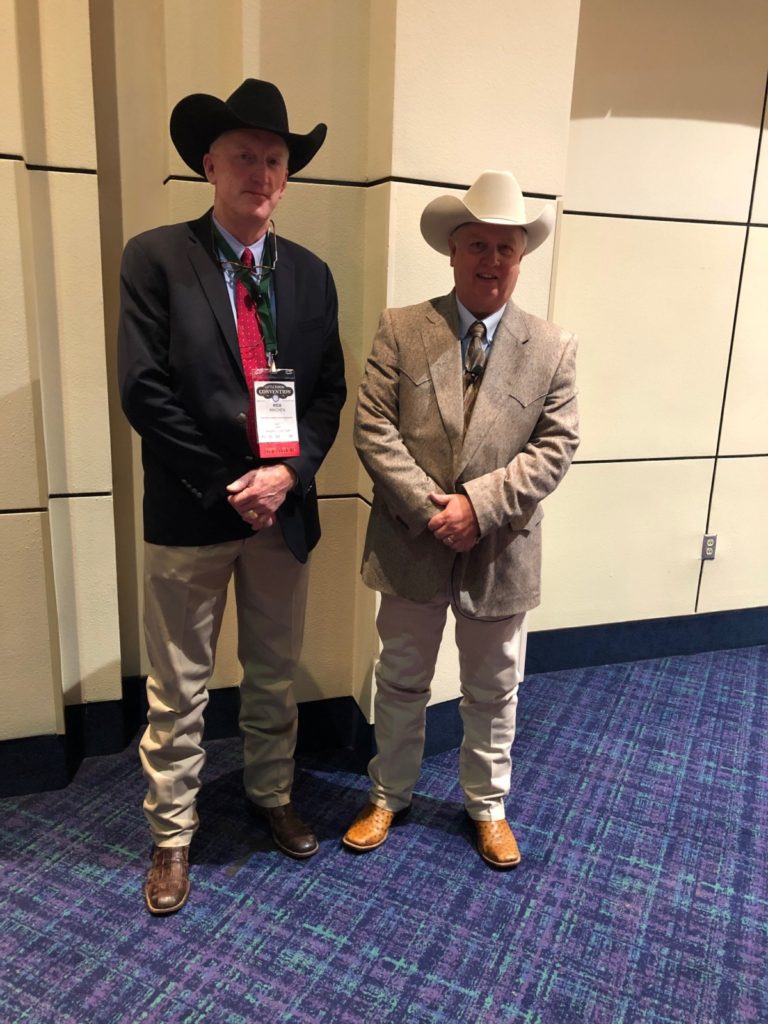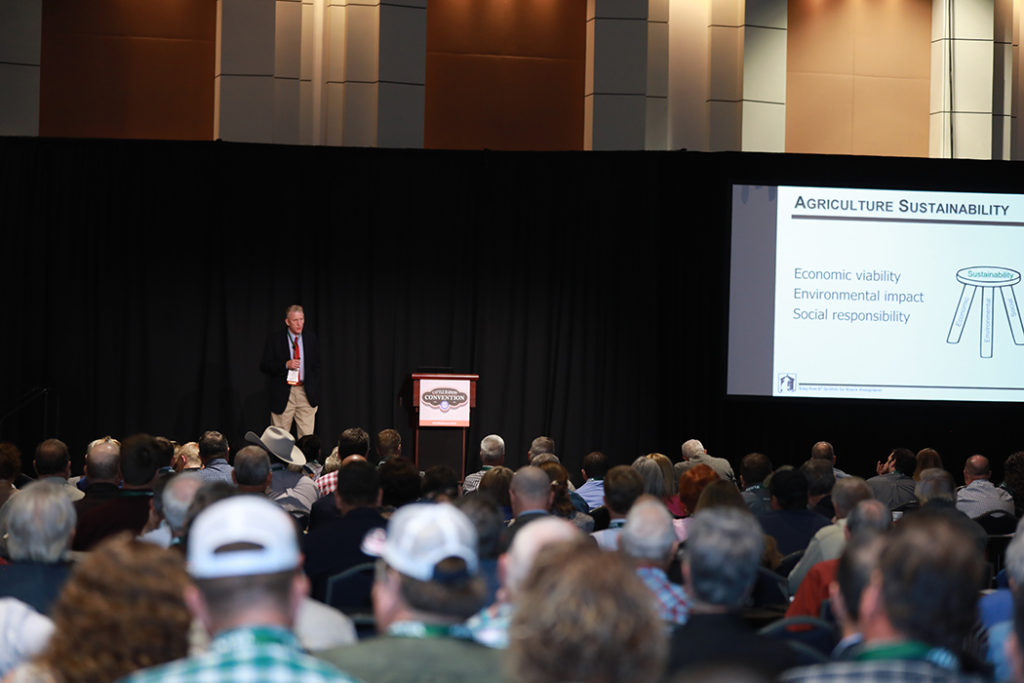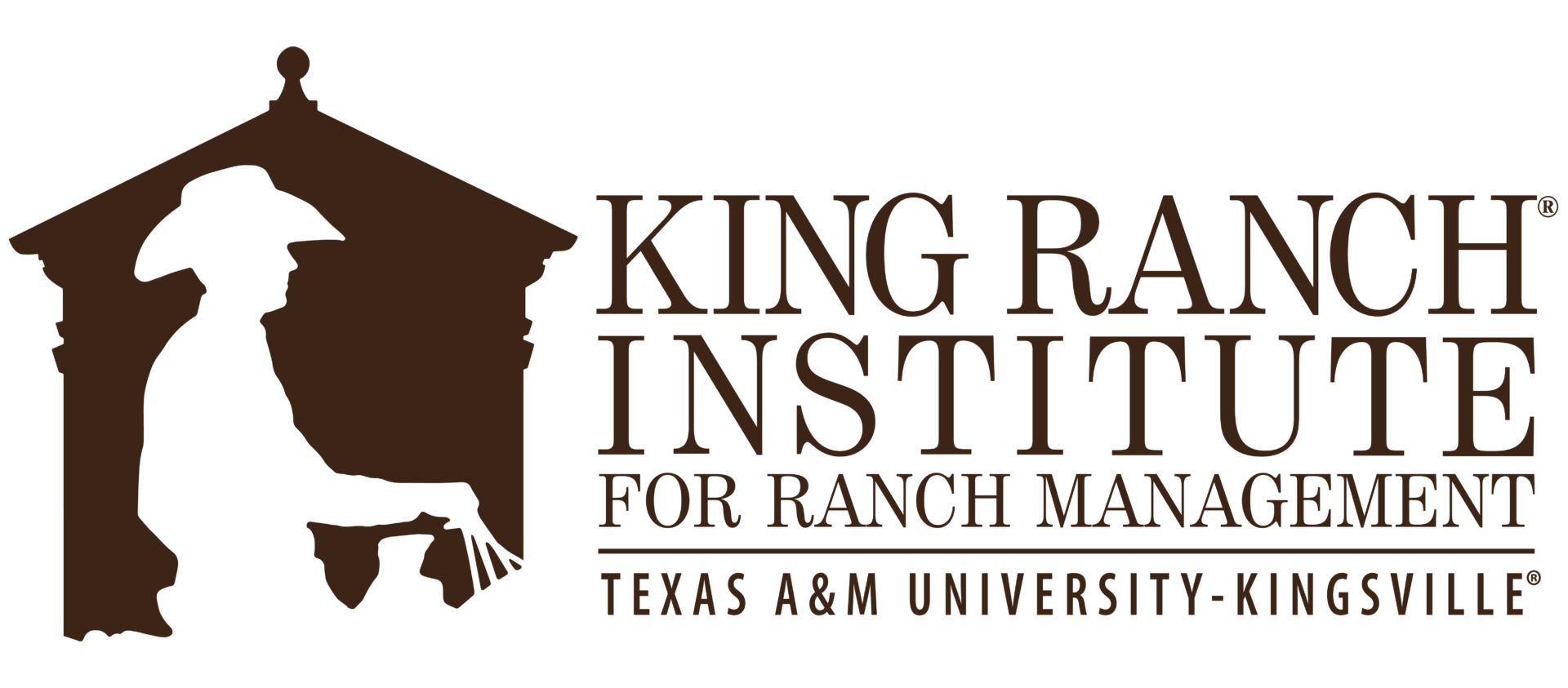What will be the same? What will be different?
By Ashley Patterson, Featured in the Spring 2019 Newsletter
What will the ranching industry look like in the year 2039? That question was raised during a presentation made at the 2019 Cattle Raisers Convention in Fort Worth, Texas, to kick off the School for Successful Ranching. In front of a crowded room of producers from across the country, King Ranch® Institute for Ranch Management (KRIRM) Paul C. Genho Endowed Chair in Ranch Management Rick Machen, PhD, and KRIRM Practitioner in Ranch Economics Stan Bevers considered five areas of interest to the ranching industry, the current situations in each area, and how a 20-year time lapse might shape the industry. These areas include: rural land, world population dynamics, climate change, the role of government, and beef production.

Rural Land
When it comes to rural land in the future, the questions will arise: Who owns the land? Who controls the land? What are their objectives in owning the land? In regards to present day, Bevers presented current land statistics in the US. According to the United Nations Food and Agriculture Organization, 70% of all US agricultural land is rangeland, which is best used as grazing land for ruminant animals.
The amount of rural land is shrinking while land values have risen significantly, increasing by $41 acre each year since 1972, explained Bevers. As the national cowherd numbers decreased since 1980, the cattle distribution shifted towards the Great Plains. This condensing of the cowherd toward the Great Plains will continue unless water availability becomes an issue.
Circling back to the questions of who will own the land 20 years from now, Bevers also noted that if today’s rancher (average age of 58.3 years in 2012) owns a portion of their land, in 20 years we could possibly see the greatest turnover of land ownership since settling the West.
World Population Dynamics
Machen continued the presentation discussing the world population dynamics and how it will influence the ranching sector. Research shows the world population standing at 7.7 billion today. It is estimated to rise to a staggering 9.2 billion by 2040 and 10 billion by 2050.
As the rural population shrinks, Machen explained that our consumers will continue to be less informed of food production and where their food comes from. However, they will continue to enjoy the least expensive and safest food supply that is provided by the US. The trend of readily available online information will not go away in 20 years.
As the youngest consumer today (which is Generation Z or Gen Z) ages over the next 20 years, they will be the local, state, and federal leaders. Machen stressed that it is important to understand this group, citing research which explained that Gen Z has never known life without Internet of Wi-Fi. They will most likely prefer convenience food options like meal kits and grocery delivery. So, as the future approaches, how will our beef practices and production change to meet the demands of this new generation?

Climate Change
“The climate is changing, that will remain the same.” The fight on climate change over the last three decades will continue to be touted as the greatest threat to the wellbeing of mankind, said Machen. Even though the science-sound reliable information shows that agriculture accounts for only 9% of Greenhouse Gas Emissions (GHG), biased research reports will continue to create an atmosphere of misinformation. In 20 years, anti-ag organizations will continue to use climate change as the venue to shape domestic food production and consumption.
Machen took a systems-approach to show how we can look for leverage to make the biggest impact on change. Based on the research and science, the leverage to reduce GHG emissions would appear to come from making changes not to the smallest source of GHG, but to the larger sources that include industry, electric, and transportation sectors.
The Role of Government
Machen stressed that governmental influence will continue to have huge impact on the beef industry. The definition of meat (fake meat) and milk will be defined by government policies and diet choices will be influenced by school lunch programs, the USDA Food Pyramid, and the Dietary Guidelines Advisory Committee, explained Machen through a series of slides showing the progression of food guides.
Grazing on the public lands of the West will continue to be at the forefront and in the media spotlight. In a 2016 report by BLM and USFS, there were 1.72 million animal units grazing in the western states on public land. By 2039, said Machen, there will be less grazing of public lands by domestic livestock. As mentioned earlier, the trends show the cattle herd moving toward the Great Plains. Machen posed the question: if we lose public grazing lands, where will the cow inventory move? Do we lose it completely?
US Cattle/Beef Industry
The aforementioned topics were described by Bevers as “outside our fences” and he took over discussion back to the “confines of our gates” to discuss the issues we face within the beef industry itself. Bevers stressed that moving forward, we must recognize that the issues of today will only become stronger in 20 years.
What will your operation look like in the next 20 years? Bevers explained how he examines three pedestals in a ranching operation: maximum sustainable productivity, at a minimal cost of production, and the delivery of a preferred product to your customer. Maximum sustainable productivity does not equate maximize production. Profitability is maximized prior to production maximization. In the reverse of that scenario, said Bevers, you miss out on profit.
Weather will continue to be the biggest influencer or weaning weights. Bevers summarized that maximizing efficiency is where ranchers need to get their mindset at the ranch level for the next 20 years.
Conclusion
Machen reiterated the fact that our greatest challenges will happen outside the perimeter fences, far removed from rural America. All of it happening, said Machen, in a social/political arena involving legislation and regulations. He concluded with a final thought calling upon the producers in the room to take part in the many avenues of industry influence and organizations—“We have to be an active part of something bigger than ourselves that represents our interests.”

